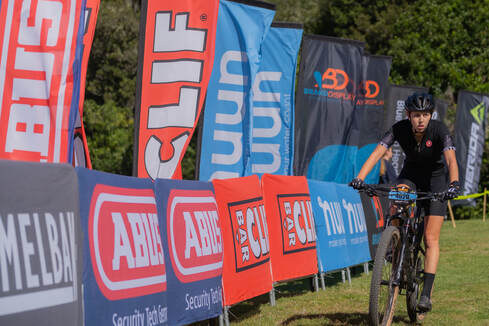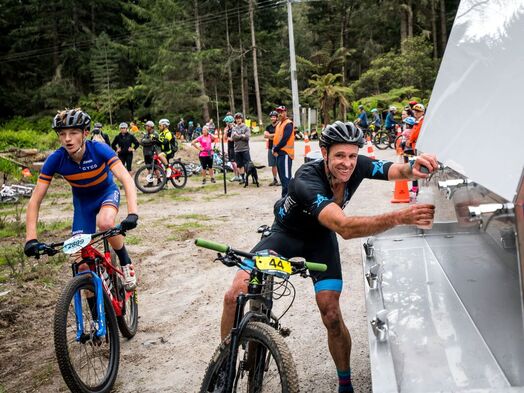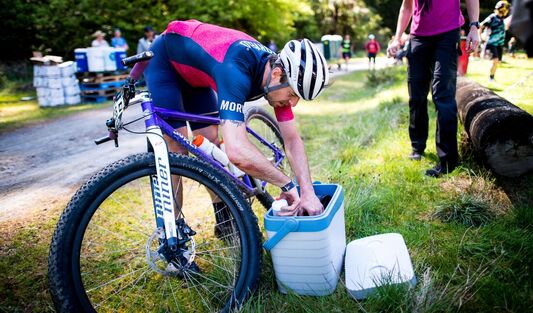|
Summer is here, and for many people, that means it’s time to get outside — whether you’re going for a XC loop, a trail ride or just out cruising on the trails. However, it’s important to know how to balance the summer heat with your mountain bike training. This week, we’ve been catching up with our Whaka 100 hydration partner NUUN, to bring you their top tips and tricks to avoid getting too hot and developing heat exhaustion whilst out riding. Heat exhaustion occurs when a person stays in the heat without taking in enough fluid, and as a result, the body’s natural cooling processes can’t work properly. If left untreated, conditions can worsen and lead to heat stroke. The summer is a great time to be outside riding your bike — you just have to know how to stay ahead of heat-related conditions. Heat Exhaustion Symptoms To recognize the signs, you must first understand the difference between heat exhaustion and heat stroke. Heat exhaustion comes first and is more mild - however it can develop into heat stroke if a person continues activity in the heat while experiencing heat exhaustion symptoms. However, both conditions are potentially harmful. By recognizing and treating symptoms immediately, you have a much better chance of recovering without worsening your condition. How to Prevent Heat Exhaustion Your first step in prevention is to take extra precautions when mountain biking in warm temperatures. You can definitely enjoy riding during the summer, you just need to be prepared. The following can help you to be proactive before a long ride or day out in the heat. 1. Hydrate well before you head out to the trails In a nationwide survey, nearly 50% of people reported that when they plan to work or exercise outside, they focus on hydrating during that outdoor activity, while only about 26% reported hydrating beforehand. To reduce the risk of heat exhaustion, hydration should start well before you step outside to start your ride. If you are already dehydrated when you begin working or exercising outside, it’s harder to catch up with your body’s hydration needs. How do you know if you’re hydrated enough before you go outside? In our research, nearly 44% of survey respondents said they rely on their level of thirst. Unfortunately, thirst is not a reliable measure of hydration. Studies show that the thirst sensation is triggered when the body is already 1-2% dehydrated, and at that level, your physical and cognitive performance may already be in decline. The best ways to more accurately assess your hydration include: Urine color: An easy way to monitor your hydration level is to assess your urine color. Light yellow — like lemonade — indicates optimal hydration, while amber to burnt orange could indicate dehydration. Bathroom frequency: You should be emptying your bladder, on average, about 5-8 times per day. If you notice that you’re using the restroom less frequently than average, it’s time to drink up. 2. Hydrate during outside activity Keep hydrating during your ride. You must replace the water you loose while sweating, as this is what allows your body’s natural cooling processes to function properly. As temperatures rise, your body begins losing water at a faster rate. On average, water loss through respiration and sweat amounts to about 450 mL per day. However, during vigorous activity in a hot environment, it is possible to lose more than 3 liters per hour, which is a lot! It’s clear that a hot environment can make a vast difference in water loss, so it’s critical that you replace those fluids. The Centers for Disease Control and Prevention (CDC) recommends drinking 250ml of water every 15-20 minutes when working in the heat. However, heavy sweating can also result in a loss of your body’s salts and minerals. While nearly 80% of respondents in a nationwide survey said they drink mainly water to hydrate, higher temperatures often necessitate the intake of other beverages that can help replace the salts and minerals that are lost during heavy sweating. Studies have found that the best beverages for rehydrating include carbohydrates or fat (to slow gastric emptying), as well as sodium, potassium and magnesium, which help promote water retention. If you're not sure how much you should be drinking you can check out this hydration calculator for more information. 3. Get enough sleep Research has found that sleep deprivation may decrease your rate of sweating. When your body can’t sweat properly, it cannot cool itself properly — and that may lead to heat exhaustion. By getting the recommended amount of sleep each night (7 or more hours per night), you can help your body better regulate its temperature and mitigate your risk. 4. Avoid training during the hottest part of the day (as far as is possible) Typically, the hottest part of the day occurs between 10 am and 4 pm. While it’s best to avoid riding during those hours and concentrate your time outdoors to the early morning or evenings, that’s not always possible. According to our research, about 43% of survey respondents exercise or work outdoors during the hottest hours of the day 1-3 times per week, and 36% participate in outdoors activities 4-7 times per week. In those cases, make sure to take breaks when possible, preferably in a cool or shaded place. 5. Wear loose-fitting, lightweight clothing When choosing clothing for mountain biking, opt for loose, lightweight clothing; clothing that is too tight can restrict your body’s ability to cool itself. When possible, choose moisture-wicking fabrics, which can help your sweat evaporate quickly and keep your body temperature from getting too high. Heat Exhaustion Recovery If you suspect you are experiencing heat exhaustion, it is important to take action immediately so it doesn’t progress to heat stroke. At the first sign of symptoms, these actions can help with recovery: 1. Hydrate 2. Take a cool bath or put cool, wet cloths on your body 3. Loosen your clothes 4. Get out of the heat and move to a cool place If your symptoms persist for longer than an hour or get worse, it’s important to seek medical help. The summer is a great time to get outside and get riding your bike — as long as you take the proper precautions to make sure you stay hydrated and maintain a normal body temperature. With the right preparation and attention to signs of too much heat & sun exposure, you can safely enjoy mountain biking! Thanks again to NUUN for their awesome advice in keeping us safe while out riding on those hot summer days!
|
PRESENTING PARTNER
MAJOR PARTNERS
RACE TITLE PARTNERS
OFFICIAL PARTNERS
OFFICIAL SUPPLIERS
ORGANISATION PARTNERS
|
STAY IN THE LOOP
Get Whaka100 updates, news and more. |
Copyright © 2022 Whaka100. All rights reserved. Whaka100® word mark and logos are registered trademarks owned by Nduro Events.
|





